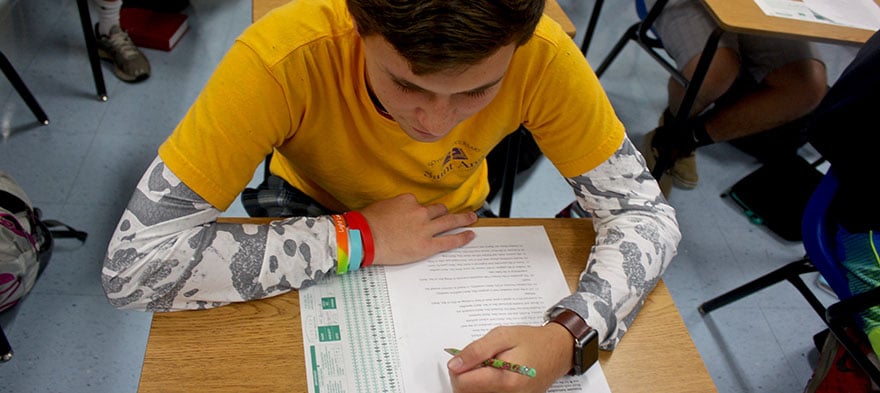
Dec 8, 2016 12:00:00 AM
Some of the other reforms Americans have attempted nationwide in past years, including smaller class sizes and an upgrade of classroom technology, do not appear on the list of things that work. In fact, there is some evidence that both policies can have a negative impact on learning. For now, the PISA reveals brutal truths about America’s education system: Math, a subject that reliably predicts children’s future earnings, continues to be the United States’ weakest area at every income level. Nearly a third of American 15-year-olds are not meeting a baseline level of ability—the lowest level the O.E.C.D. believes children must reach in order to thrive as adults in the modern world. And affluence is no guarantee of better results, particularly in science and math: The latest PISA data (which includes private-school students) shows that America’s most advantaged teenagers scored below their well-off peers in science in 20 other countries, including Canada and Britain.Buried in this year’s results was one truly encouraging sign around equity: When it came to closing the gap, our disadvantaged students outperformed disadvantaged students from other nations, notably in science.
Tracy Dell’Angela is a writer, education nonprofit executive director and a mom passionate about education improvements. Previously, Tracy was Director of Outreach and Communications for the Institute of Education Sciences (IES) at the U.S. Department of Education in Washington, D.C. She came to IES from the University of Chicago Consortium on Chicago School Research, which produces research that drives improvement in Chicago and nationwide. She also served as Senior Project Director for 100Kin10 at the University of Chicago and was Director of Program Investments and Partnerships for the Chicago Public Education Fund. Tracy spent most of her career as an award-winning newspaper journalist, including 12 years at the Chicago Tribune as an education reporter covering national policy and the Chicago Public Schools. A Californian by birth but a Chicagoan in spirit, Tracy attended University of Chicago as a master's student in social sciences and earned a B.A. in journalism and political science from San Diego State University.
Few issues in education spark more tension and debate than standardized testing. Are they a tool for equity or a burden on students? A necessary check on school systems or a flawed measure of...
Charter schools are public schools with a purpose. Operating independently from traditional school districts, they're tuition-free, open to all students, and publicly funded—but with more flexibility...
Despite the benefits of a diverse teaching force, prospective teachers of color fall out of our leaky preparation pipeline at every stage: preparation, hiring, induction, and retention. Here’s what...
Ed Post is the flagship website platform of brightbeam, a 501(c3) network of education activists and influencers demanding a better education and a brighter future for every child.
© 2020-2025 brightbeam. All rights reserved.
Leave a Comment